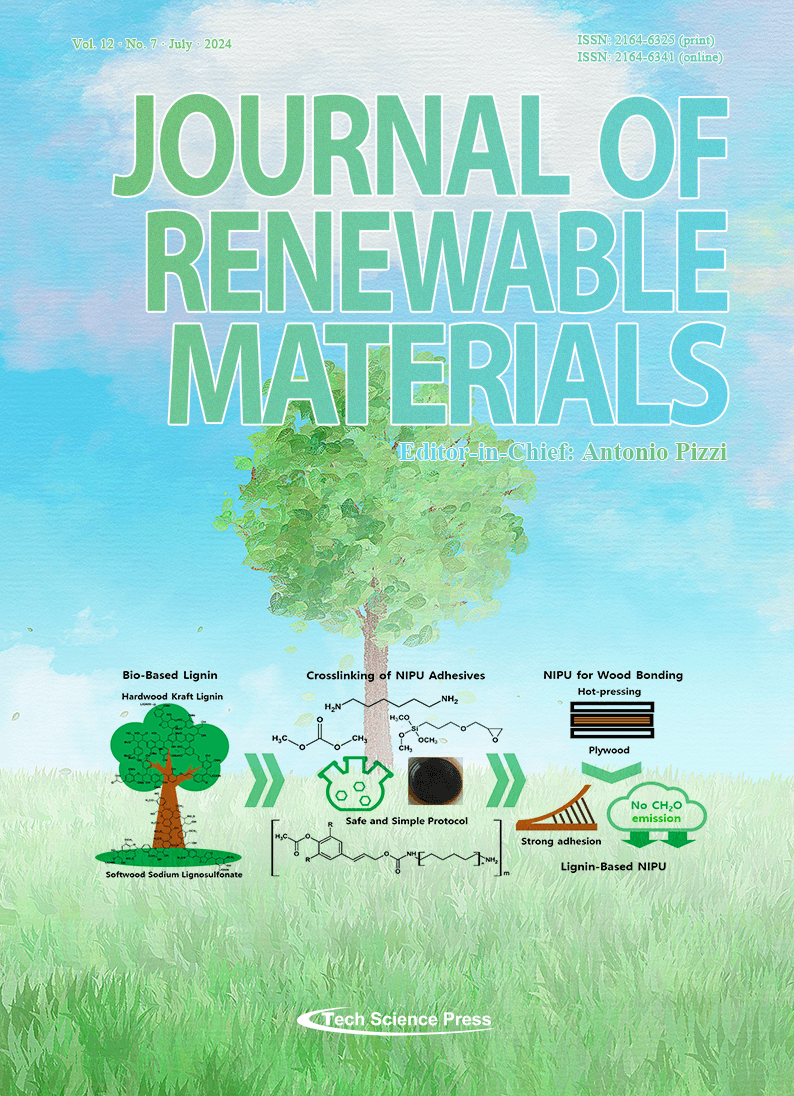Thermo-Mechanical, Physico-Chemical, Morphological, and Fire Characteristics of Eco-Friendly Particleboard Manufactured with Phosphorylated Lignin Addition
Apri Heri Iswanto1,*, Harisyah Manurung1, Asma Sohail2, Lee Seng Hua3,9, Petar Antov4, Deded Sarip Nawawi5, Sarah Latifah5, Dewi Shafa Kayla5,6, Sukma Surya Kusumah6, Muhammad Adly Rahandi Lubis6, Linda Makovická Osvaldová7, Mohd. Hazwan Hussin8, Rangabhashiyam Selvasembian9, Lum Wei Chen10, Puji Rahmawati Nurcahyani6, Nam Hun Kim11, Widya Fatriasari6
Journal of Renewable Materials, Vol.12, No.7, pp. 1311-1341, 2024, DOI:10.32604/jrm.2024.052172
- 21 August 2024
(This article belongs to the Special Issue: Advances in Eco-friendly Wood-Based Composites: Design, Manufacturing, Properties and Applications – Ⅱ)
Abstract Lignin, lignosulfonate, and synthesized phosphorylated lignosulfonate were introduced as green fillers in citric acid-sucrose adhesives for bonding particleboard fabricated from areca leaf sheath (ALS). The characteristics of particleboards were compared to that of ultralow emitting formaldehyde (ULEF-UF). The fillers derived from Eucalyptus spp. kraft-lignin were added for flame retardancy enhancement. 10% of each lignin and modified lignin was added into the ULEF-UF and citric acid-sucrose bonded particleboards. Analyses applied to particleboards included thermal characteristics, X-ray diffraction analysis (XRD), morphological properties, Fourier transform infrared spectroscopy (FTIR), as well as physical, mechanical, and fire resistance characteristics of the… More >
Graphic Abstract
